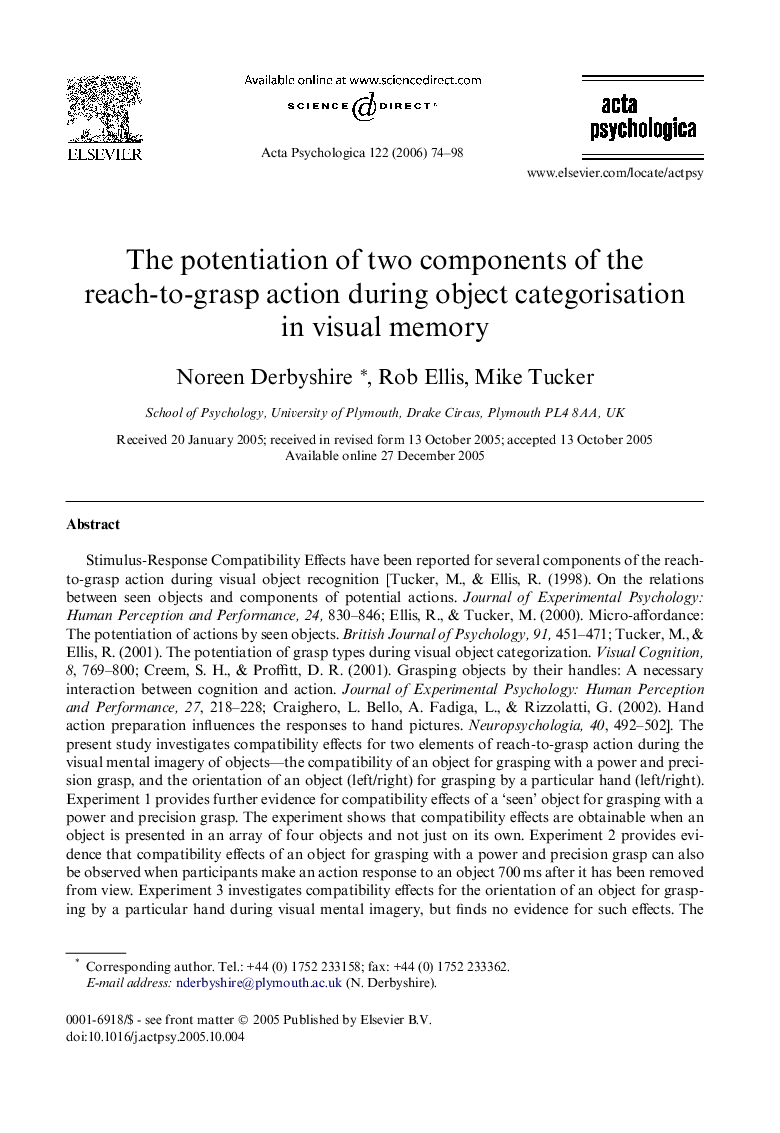| Article ID | Journal | Published Year | Pages | File Type |
|---|---|---|---|---|
| 920635 | Acta Psychologica | 2006 | 25 Pages |
Stimulus-Response Compatibility Effects have been reported for several components of the reach-to-grasp action during visual object recognition [Tucker, M., & Ellis, R. (1998). On the relations between seen objects and components of potential actions. Journal of Experimental Psychology: Human Perception and Performance, 24, 830–846; Ellis, R., & Tucker, M. (2000). Micro-affordance: The potentiation of actions by seen objects. British Journal of Psychology, 91, 451–471; Tucker, M., & Ellis, R. (2001). The potentiation of grasp types during visual object categorization. Visual Cognition, 8, 769–800; Creem, S. H., & Proffitt, D. R. (2001). Grasping objects by their handles: A necessary interaction between cognition and action. Journal of Experimental Psychology: Human Perception and Performance, 27, 218–228; Craighero, L. Bello, A. Fadiga, L., & Rizzolatti, G. (2002). Hand action preparation influences the responses to hand pictures. Neuropsychologia, 40, 492–502]. The present study investigates compatibility effects for two elements of reach-to-grasp action during the visual mental imagery of objects—the compatibility of an object for grasping with a power and precision grasp, and the orientation of an object (left/right) for grasping by a particular hand (left/right). Experiment 1 provides further evidence for compatibility effects of a ‘seen’ object for grasping with a power and precision grasp. The experiment shows that compatibility effects are obtainable when an object is presented in an array of four objects and not just on its own. Experiment 2 provides evidence that compatibility effects of an object for grasping with a power and precision grasp can also be observed when participants make an action response to an object 700 ms after it has been removed from view. Experiment 3 investigates compatibility effects for the orientation of an object for grasping by a particular hand during visual mental imagery, but finds no evidence for such effects. The findings are discussed in relation to two arguments put forward to reconcile ecological and representational theories of visual object recognition.
